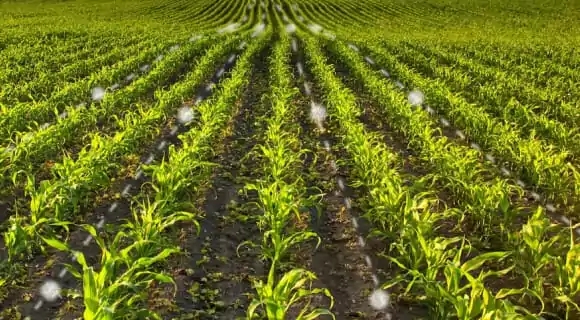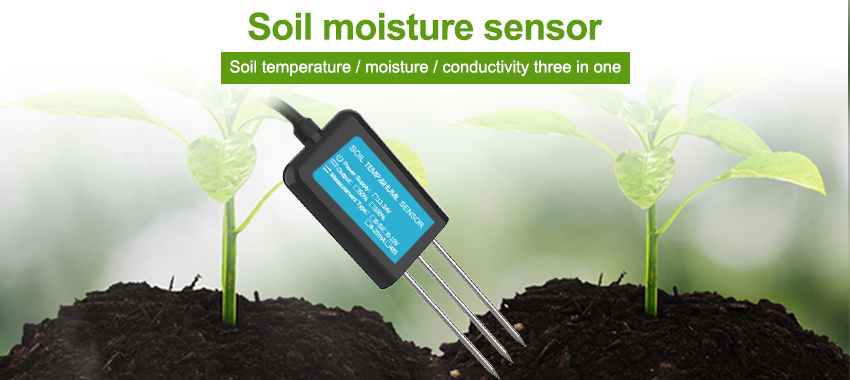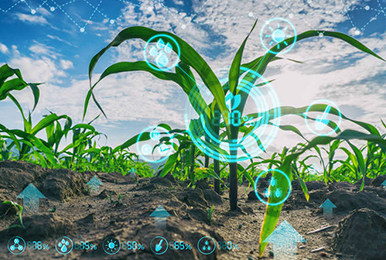What Is A Soil Moisture Sensor?
A soil moisture sensor, as its name implies, is an appliance for monitoring the moisture levels in the soil. Integrating this tool in the irrigation system may allow for more precise watering scheduling than is possible with past information or weather forecasts.

Both conventional approaches have some drawbacks that farmers need to be aware of:
relying on historical data limits adaptation to unexpected weather shifts;
planning irrigation based on projected crop evapotranspiration, agriculturalists must perform some calculations (often complex) for each field’s unique conditions.
By contrast, modern soil moisture measurement sensors provide significantly more precise readings and display results in near real-time. These readings allow farmers to effortlessly reduce or increase watering for optimal crop development.
Types Of Soil Moisture Sensors

Soil moisture sensors are one of the cornerstone instruments of smart farming. They are continually evolving to become more user-friendly. In contrast to older, more cumbersome methods, today’s smart soil moisture sensors can transmit data wirelessly, be deployed at varying depths, and upload readings directly to a GIS database, eliminating the need for manual data collection.
Furthermore, sensors are not limited to being stationary; they can also be portable. Data may be collected from any area and depth with portable devices as opposed to stationary ones.
Based on the underlying technology, there are the following soil moisture sensor types:
- ground — installed below the ground to monitor the root zone conditions;
- aerial — retrieving data with unmanned aerial vehicles (UAVs), which is an uncommon practice in soil moisture mapping;
- satellite — estimating the situation from space. They do not interfere with activities in the field, help save costs, and don’t require labor-consuming installations.
To further categorize sensors, we might consider the indicators of ground moisture content that they measure. We’ll delve deeper into these categories below.
Electromagnetic Soil moisture sensors

Electromagnetic sensors have been alternatives to neutron probes since the late 1980s. Let’s consider the most typical examples of electromagnetic sensors:
Capacitance or frequency-domain refractometry (FDR) sensors generate an electromagnetic signal and analyze the frequency shift between the outgoing and reflected waves.
Time-domain reflectometry (TDR) soil moisture sensors use voltage on parallel rods to cause pulses, which are then reflected to the device for analysis.
Transmissometry sensors in the time domain (TDT) share the same principle as TDRs but utilize a closed circuit with the rods connected in a loop. Similar to time-domain reflectometers, the speed of the returned pulse will be lower in damp ground than in dry ground.
Sensor Installation And Calibration Routine

Having decided to utilize a soil moisture sensor system, you will need to install, calibrate, and adjust them constantly. Manufacturer-provided calibration functions are typically refined in controlled laboratory settings. However, factors like soil temperature, texture, bulk density, and soil salinization affect soil moisture sensor accuracy
. This is the point at which designated specialists complete various operations, such as determining:
device locations;
distance from each other;
their number;
depth of installation;
the way the sensors are placed;
time of recalibration;
data reading and interpretation.
Apart from this routine, employees have to fix devices that are out of service, validate the accuracy of data, and elaborate irrigation patterns. Sensor specialists have a tough job since there’s not one universally accepted way to test soil moisture sensors.
Among all types of sensors, satellite software is the one that really saves you trouble. Monitoring apps are user-friendly and available on many devices, including a PC, a laptop, a tablet, or even a smartphone. Thus, you are able to know what is happening in your field anywhere and anytime, provided you have internet access. Such apps enable farmers to detect the issue remotely and react in a timely manner.
